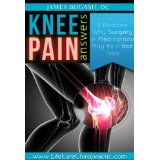
Knee arthritis and vitamin D
Considering that exercise and mobility are key aspects to keeping us young with age, knee osteoarthritis symptoms can be deadly.
Despite the fact that exercise is one of the most powerful tools for managing the pain of osteoarthritis, it is, paradoxically, the first thing most people with knee pain avoid first.
Of course, long before you should worry about developing knee arthritis pain in the first place, an anti-diabetic and anti-cardiovascular diet (which are pretty much the same thing) have been shown to lower your risk of developing arthritis in the first place. That means obvious things like maintaining an ideal body weight, not smoking and eating more fruits and vegetables.
But if the 60’s, 70’s and 80’s have already done you in and you have been diagnosed with knee osteoarthritis, there is a long list of things that you can do to help maintain your mobility.
As I’ve already mentioned, exercise is the top of the list. (Since it’s beyond the scope of this article to discuss all the ways to improve osteoarthritis symptoms, if you’d like to read more, you can download my eBook Knee Pain Answers by clicking here)
If you’d like a simple solution that you can add today to delay any further progression of your knee arthritis, then look no further than this particular study. In it, researchers looked at 418 participants who had at least one knee with both symptomatic and radiographic osteoarthritis. Vitamin D and parathyroid hormone (PTH) blood levels were checked at a baseline and then evaluted 2 and 4 years later in those participants who had progression of his or her knee osteoarthritis (defined as any increase in the radiographic joint space narrowing score).
As a quick refresher, PTH is designed to keep calcium levels stable in the bloodstream. This means that if vitamin D levels are low (vitamin D helps your body absorb more calcium from your diet) the body has to respond by raising PTH to break down bone to keep calcium stable in the blood. So low vitamin D and high PTH indicates something is really off kilter in your body. Now back to the study.
Here’s what they found:
- As has been seen in almost every other study on vitamin D, the blood values were at the very low end of normal (26.2 μg/L) and a good chunk of the participants were deficient (16% were below 15 μg/L).
- Those with vitamin D levels below 15 had double the risk of knee osteoarthritis progression.
- Even worse, those participants who had both low vitamin D and high PTH had a 320% higher risk of arthritis progression.
Now. This does not mean that you can start sipping on liquid vitamin D at 10,000 IU per day and sit on your duff watching football, confident that your knee pain is going away by tomorrow.
But this does add vitamin D to the list of things that you can do to either slow or halt the worsening of your knee osteoarthritis symptoms.
